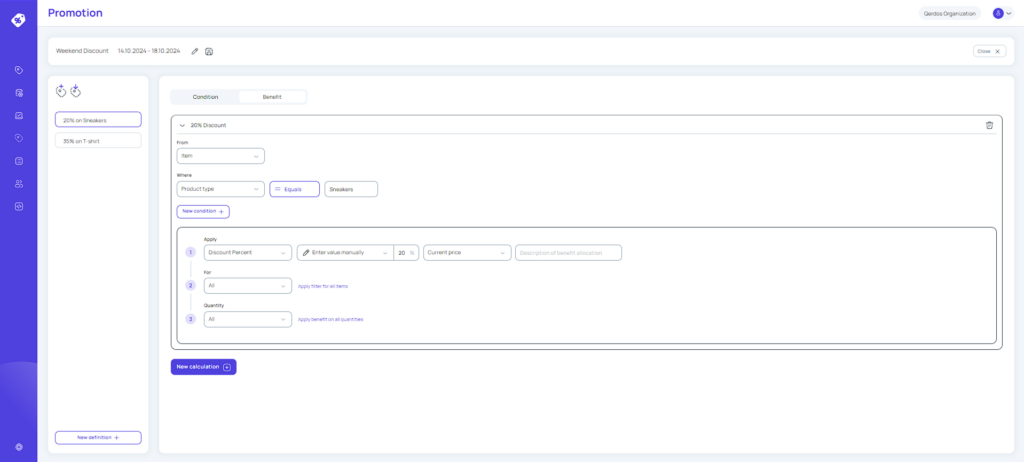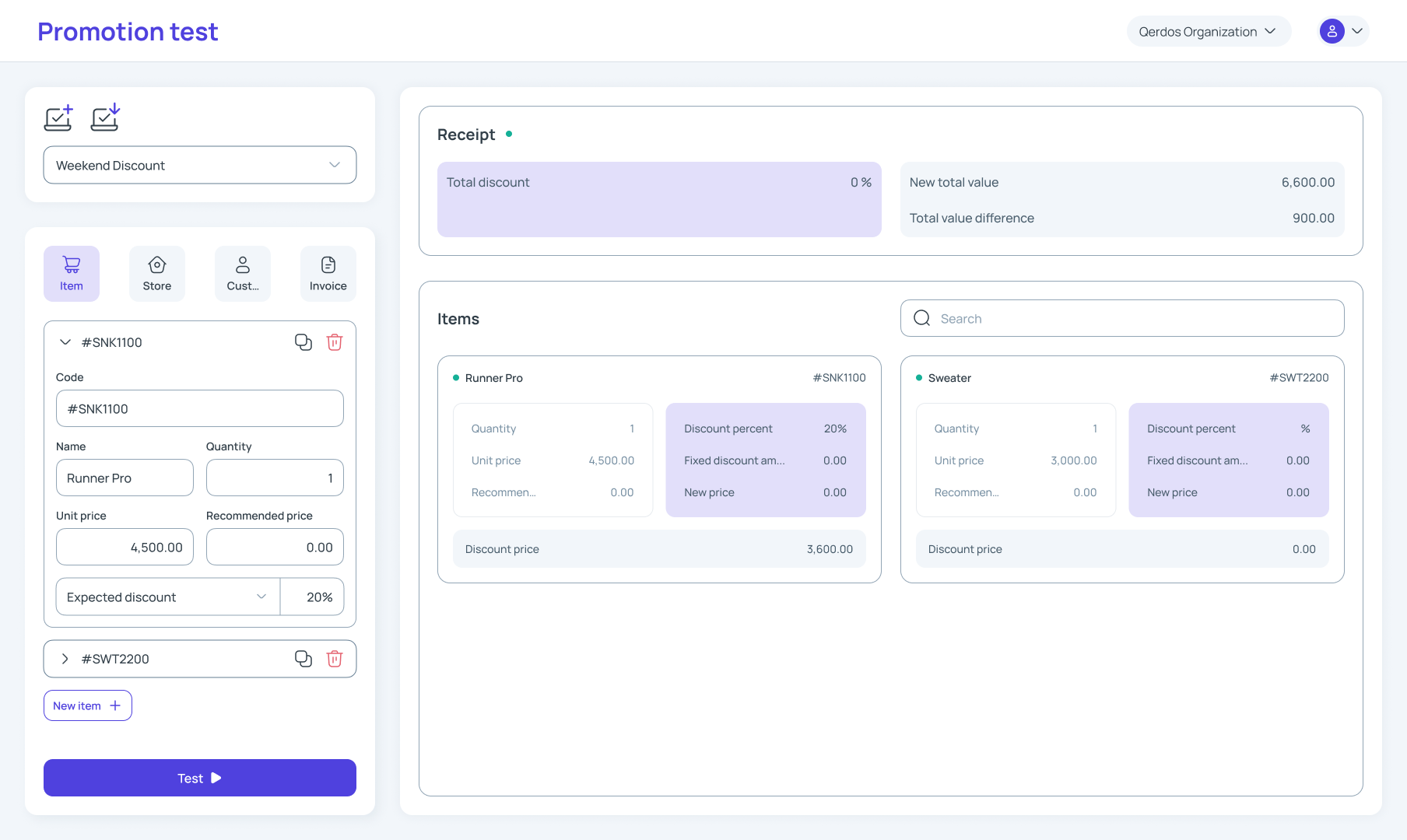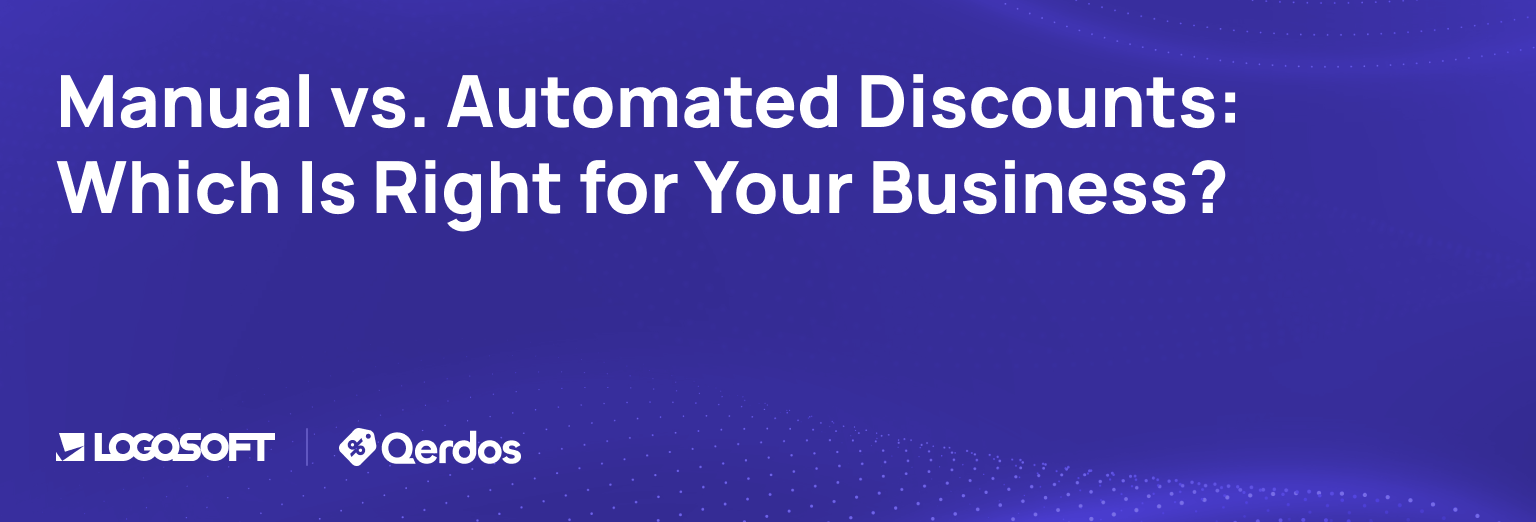Both retail and ecommerce settings are becoming more and more competitive each day, and if you aim to stand out in this field (which you should always aim for), the most important route of doing so is the route of discounts. Discounts are a way to attract new customers and reward loyal ones, but they are also a great way for you to clear out inventory and boost sales.
Nowadays, the two main ways of retail businesses applying discounts are manual and automated discounts, with the second approach becoming the preferred one. We will break down the pros and cons of both methods to show why this is so and to help you get a better insight into which method best fits your needs.
What Are Manual Discounts?
Manual discounts require human intervention to be applied, be it through manual updates to the system or being applied directly by staff. As they are not automated, they rely on store owners or employees—on human input.
How Do They Work?
Manuals discounts involve directly entering discount codes at checkout, either online or at a physical POS (point of sale) system. They may also involve creating unique coupon codes for specific campaigns or manually adjusting product prices on an individual basis, either for individual customers or individual products.
Common Use Cases
Manual discounts are not as outdated as it may sound; there are still specific cases where a good old manual discount finds its use:
- Flash Sales or Limited-Time Offers: Whenever quick, spontaneous discounts are needed, like during Black Friday or clearance events, a retail business may find itself implementing a manual discount.
- Personalized Discounts for VIP Customers: When businesses want to reward loyal clients with custom discounts and pay special attention to them, it may be best to do it manually.
- In-Store Promotions and Special Events: When discounts are applied during events or in brick-and-mortar stores, it may once again be more custom-friendly to apply them manually.
Manual effort clearly offers flexibility as its main benefit, but we all know how time-consuming and prone to errors it can be in all spheres of life. However, we’ll go over the pros and cons in more detail later on, so bear with us through defining automation as well.
What Are Automated Discounts?
Automated discounts are those applied without any manual input, based on predefined rules and conditions. As they do not demand manual intervention, they are less prone to errors, and their integration in the checkout process makes them highly efficient.
How Do These Work?
As automated discounts are based on the above-mentioned predefined rules and conditions, they are triggered whenever these set conditions are met. For example, if an automatic discount application at checkout is set, offers like “Buy One Get One Free” are automatically calculated and shown at checkout without requiring a code.

Behavior-triggered discounts can also be set to apply based on customer actions, such as a first-time purchase. Moreover, you could also set discounts that increase as the order quantity goes up, like “Buy 3, Get 20% Off,” called bulk or tiered pricing discounts, or even schedule promotions that activate and deactivate at specific set times, like during holidays.
Common Use Cases
The possibilities are endless when it comes to automated discounts; some of the most common use cases are:
- Sitewide Discounts During Seasonal Sales: Remember how we said that quick and spontaneous events might demand a manual discount? Well, imagine how much having the possibility of automatically applying a discount during events like Black Friday makes lives easier.
- Membership or Loyalty Program Discounts: Offering exclusive discounts to members or repeat customers without needing them to manually apply codes might make them feel truly exclusive.
- Bundled or Volume-Based Discounts: Automatically lowering the total when multiple related products are bought together saves brain cells when no one needs to do the calculations in real time.
Automation translates into time-saving, error-reducing, and, most importantly, improved customer experience, all of which are precious when it comes to larger, more dynamic stores.
Key Differences Between Manual and Automated Discounts
| Feature | Manual Discounts | Automated Discounts |
| Ease of Implementation | Requires manual setup for each promotion | Set once and runs automatically |
| Time & Effort | Labor-intensive | Saves time with automation |
| Flexibility | Allows case-by-case adjustments | Works best for standard rules |
| Error Risk | Higher chance of human error | Minimizes mistakes with automation |
| Scalability | Suitable for small-scale promotions | Ideal for large-scale discounts |
| Customer Experience | May require customer input (e.g., entering a code) | Seamless experience |
Pros & Cons of Manual and Automated Discounts
Although it’s clear now that automated discounts offer more benefits, both manual and automated methods have their strengths and weaknesses.
Pros of Manual Discounts
Manual discounts offer businesses the opportunity to truly put in the effort and tailor offers to specific customers, like VIP clients or loyal shoppers, which improves relationships with clients by making them feel seen and valued.
It is also important to note that not all retailers require complex automation tools—small retailers with limited inventory can easily manage with manual discounts.
Finally, manual discounts are great for selective usage in special cases, like providing unique offers during in-store events and handling instances of customer complaints.
Cons of Manual Discounts
Applying discounts manually at checkout or managing coupon codes requires significant time and effort, especially as the business scales, so the main con is definitely that they’re time-consuming and labor-intensive.
The higher risk of pricing errors is also not to be neglected, as human errors in manual entry can lead to incorrect discount applications, frustrating customers, and causing revenue loss.
However, probably the main reason why manual is being replaced with automation is the increase in sales and product volumes—the point where keeping up with manual discounting becomes overwhelming and impractical.
While manual discounts offer flexibility and allow you to add that personal touch, the challenges they come with make them less suitable for larger or rapidly growing businesses.
Pros of Automated Discounts
Once you set automated discounts up, your work is pretty much done, and this must be the greatest benefit in retail. Automated discounts run on their own, not needing manual input, thus significantly reducing the workload for business owners and/or employees.
Moreover, the less manual input needed, the less room for human errors and inconsistencies—automation ensures that discounts are applied accurately every time.
But besides being directly beneficial to you, they also indirectly harvest the fruits for your business by improving customer experience and strengthening your relationships with customers. Modern shoppers appreciate the convenience of seeing discounts applied automatically at checkout, and these kinds of smooth processes translate to their being satisfied and often returning.
Cons of Automated Discounts
As nothing in life is perfect, automated discounts have their flaws as well. They are less flexible and less adaptable in some cases, as they might lack the nuance needed for spontaneous or highly specific discount scenarios.
Moreover, initial setup and software integration are not always rainbows and unicorns—implementing automation can take time and effort, especially if it involves integrating with existing eCommerce systems. That’s why it’s important to choose a solution like Querdos that allows easy integration with your existing sales infrastructure.
Automation also carries the risk of unintentional discounts applying in unexpected situations and leading to revenue loss if rules are not carefully configured, which is why testing tools are significant.
When to Use Manual vs. Automated Discounts
Manual discounts are best suited for situations where personalization and flexibility are key. These include:
- Small Businesses with Fewer Promotions: Since there are limited offers to manage, manual application is feasible, straightforward, and sufficient.
- Personalized Customer Service: For exclusive VIP offers or unique discounts tailored to specific customers, manual discounts allow a more personal touch and customization.
- One-Time Events or Unique Deals: Special occasions, flash sales, or unexpected events may require quick, customized discounting that manual methods can handle efficiently.
On the other hand, automated discounts are ideal for high-volume operations and frequent promotions, such as:
- E-commerce and Retail Businesses with Frequent Promotions: Automated systems can handle large volumes of discounts efficiently, applying rules without manual intervention.
- High-Volume Stores Needing Efficiency: Retailers processing many transactions benefit from the speed and accuracy of automated discounts.
- Loyalty Programs and Membership-Based Discounts: Automated systems seamlessly apply discounts to returning customers or loyalty members, boosting customer retention without added effort.
How to Implement Discount Automation
We would summarize the implementation process in one acronym—DST. First, define discount rules based on purchase behavior, such as cart value, customer status, or product categories.

Then, schedule promotions in advance, planning out your seasonal sales and volume-based discounts to make sure they activate and expire on time.
Last but not least, test and optimize discount campaigns to make sure they are applied correctly and don’t overlap unintentionally, and monitor performance to tweak where needed.

Final Thoughts
We all have our place under the sun, and both manual and automated discounts have their place in e-commerce and retail, each offering distinct advantages and challenges. It all comes down to what’s more important to you and what aligns best with your particular business needs—do you prefer a personal touch allowed in the flexibility of manual adjustments or the efficiency of automated solutions that save time, reduce human errors, and enhance customer experience? Ultimately, the best approach depends on carefully evaluating your needs, scale, and goals.



Leave a Reply